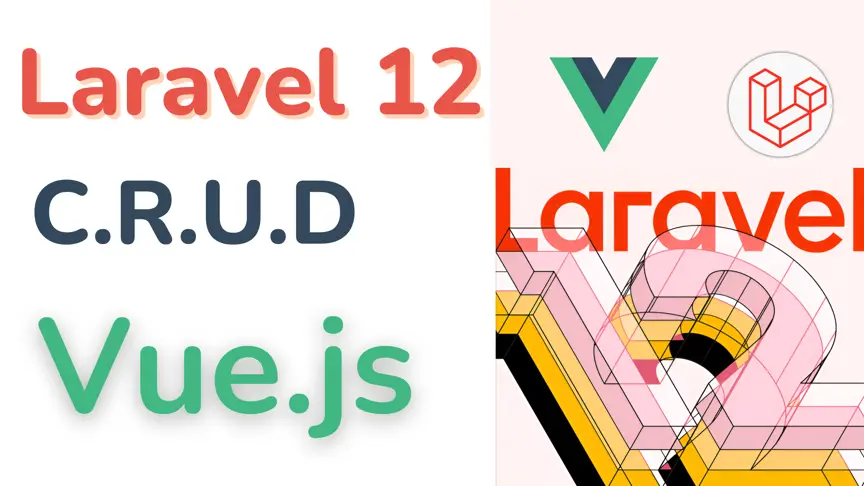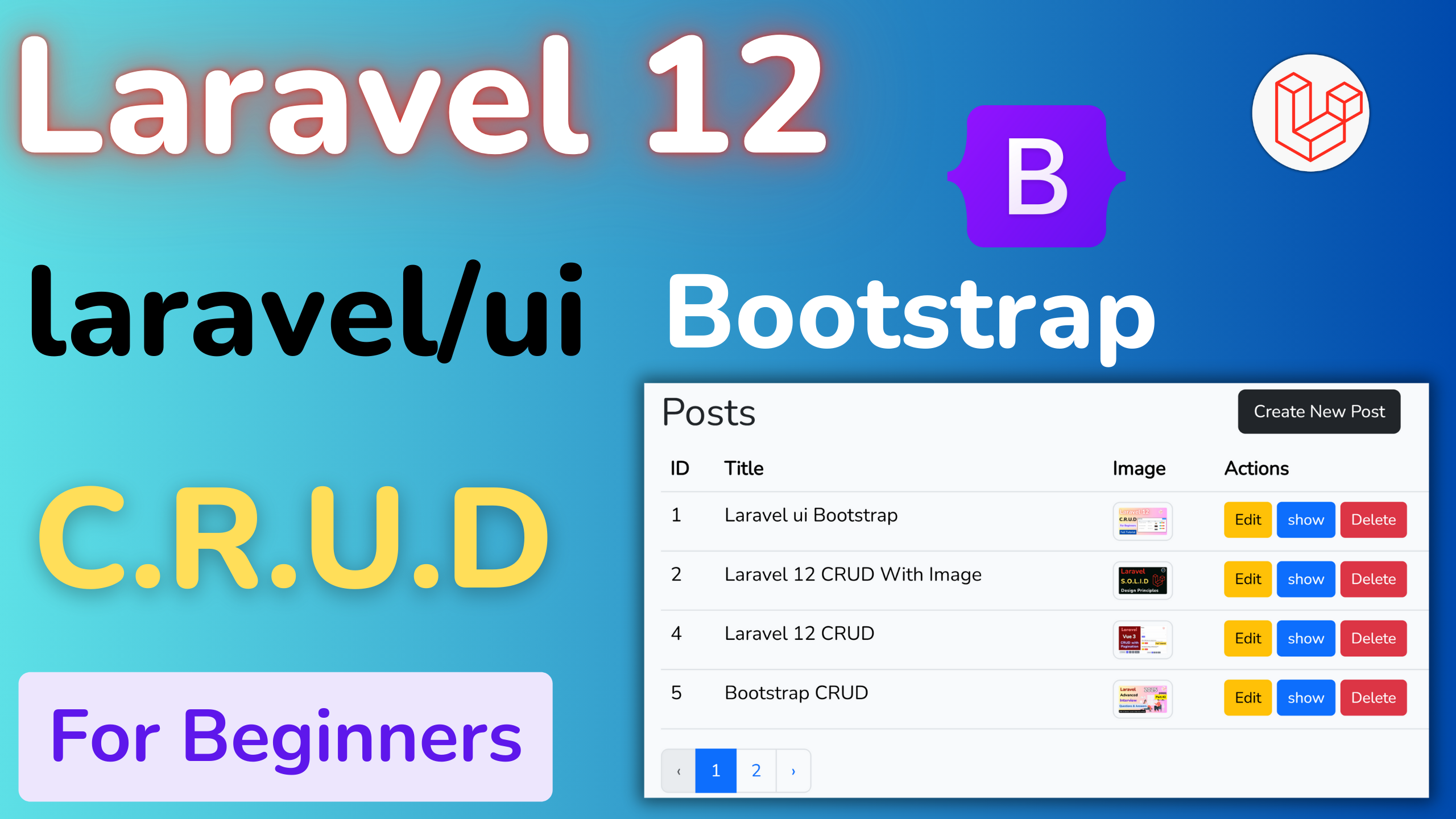Basic Concepts of Laravel Every Beginner Developer Should Learn

Kritim Yantra
Apr 06, 2025
Laravel is a powerful PHP framework that simplifies web development with its elegant syntax and rich features. If you're just starting with Laravel, understanding its core concepts will help you build applications efficiently.
In this blog, we’ll cover:
- MVC Architecture
- Routing in Laravel
- Blade Templating Engine
- Controllers
- Database & Eloquent ORM
- Migrations & Seeders
- Middleware
- Forms & Validation
- Authentication
- Artisan CLI
Let’s dive in!
1. MVC Architecture (Model-View-Controller)
Laravel follows the MVC pattern, which separates an application into three parts:
- Model → Handles database logic (e.g.,
User.php). - View → Displays data (Blade templates, e.g.,
welcome.blade.php). - Controller → Manages user requests (e.g.,
UserController.php).
✅ Why is MVC important?
- Keeps code organized and maintainable.
- Separates business logic from presentation.
2. Routing in Laravel
Routes define URL endpoints and what happens when a user visits them.
Basic Route Example
// routes/web.php
Route::get('/hello', function () {
return "Hello, Laravel!";
});
- Visiting
/hellowill display "Hello, Laravel!".
Route Parameters
Route::get('/user/{id}', function ($id) {
return "User ID: " . $id;
});
/user/5→ Output: "User ID: 5"
✅ Common Route Types:
Route::get()→ For reading data.Route::post()→ For submitting forms.Route::put()→ For updates.Route::delete()→ For deletions.
3. Blade Templating Engine
Blade is Laravel’s simple yet powerful templating engine.
Basic Blade Syntax
<!-- resources/views/welcome.blade.php -->
<h1>Hello, {{ $name }}!</h1>
{{ $name }}→ Outputs a PHP variable (escaped for security).
Extending Layouts (Template Inheritance)
<!-- resources/views/layouts/app.blade.php -->
<html>
<head><title>@yield('title')</title></head>
<body>
@yield('content')
</body>
</html>
<!-- resources/views/home.blade.php -->
@extends('layouts.app')
@section('title', 'Home Page')
@section('content')
<h1>Welcome to Laravel!</h1>
@endsection
✅ Why use Blade?
- Reusable components (like headers, footers).
- Clean separation of PHP and HTML.
4. Controllers
Controllers handle application logic (instead of putting everything in routes).
Creating a Controller
php artisan make:controller UserController
Defining a Controller Method
// app/Http/Controllers/UserController.php
public function show($id) {
return "User ID: " . $id;
}
Linking Route to Controller
// routes/web.php
Route::get('/user/{id}', [UserController::class, 'show']);
✅ Best Practice:
- Keep controllers lean (move business logic to Models).
5. Database & Eloquent ORM
Laravel uses Eloquent ORM to interact with databases.
Defining a Model
php artisan make:model Post
Basic Eloquent Queries
// Get all posts
$posts = Post::all();
// Find a post by ID
$post = Post::find(1);
// Create a new post
Post::create(['title' => 'First Post']);
✅ Why Eloquent?
- No need to write raw SQL queries.
- Works with MySQL, PostgreSQL, SQLite, SQL Server.
6. Migrations & Seeders
Migrations → Manage database schema.
php artisan make:migration create_posts_table
// database/migrations/xxxx_create_posts_table.php
Schema::create('posts', function (Blueprint $table) {
$table->id();
$table->string('title');
$table->timestamps();
});
Run migrations:
php artisan migrate
Seeders → Insert dummy data.
php artisan make:seeder PostsTableSeeder
// database/seeders/PostsTableSeeder.php
Post::create(['title' => 'Sample Post']);
Run seeders:
php artisan db:seed
7. Middleware
Middleware filters HTTP requests (e.g., authentication checks).
Example: Auth Middleware
// routes/web.php
Route::get('/dashboard', function () {
return "Welcome to Dashboard!";
})->middleware('auth');
✅ Common Uses:
- Authentication (
authmiddleware). - Admin checks (
adminmiddleware).
8. Forms & Validation
Creating a Form (Blade)
<form method="POST" action="/post">
@csrf
<input type="text" name="title">
<button type="submit">Submit</button>
</form>
Validation in Controller
public function store(Request $request) {
$validated = $request->validate([
'title' => 'required|max:255',
]);
// Store the post...
}
✅ Why Laravel Validation?
- Prevents malicious data (SQL injection, XSS).
- Easy error handling.
9. Authentication
Laravel provides built-in auth scaffolding:
php artisan make:auth
Or use Laravel Breeze/Jetstream:
composer require laravel/breeze --dev
php artisan breeze:install
npm install && npm run dev
php artisan migrate
✅ Key Features:
- Login/Register system ready in minutes.
- Password reset functionality.
10. Artisan CLI
Artisan is Laravel’s command-line tool for automating tasks.
Common Artisan Commands
| Command | Description |
|---|---|
php artisan make:model Post |
Creates a new model |
php artisan make:controller PostController |
Creates a controller |
php artisan migrate |
Runs database migrations |
php artisan serve |
Starts development server |
php artisan tinker |
Interact with Laravel in REPL |
✅ Why Artisan?
- Speeds up development (no manual file creation).
- Automates repetitive tasks.
Conclusion
These 10 fundamental Laravel concepts will help you get started with confidence:
- MVC Architecture → Organizes code.
- Routing → Handles URLs.
- Blade → Frontend templating.
- Controllers → Manage logic.
- Eloquent ORM → Database interactions.
- Migrations & Seeders → Manage DB structure & dummy data.
- Middleware → Request filtering.
- Forms & Validation → Secure data handling.
- Authentication → User login system.
- Artisan CLI → Automation tool.
Next Steps:
- Build a simple blog with CRUD operations.
- Explore Laravel relationships (
hasMany,belongsTo). - Learn API development with Laravel Sanctum.
Happy coding! 🚀
📌 Need help? Drop your questions below! 👇
Comments
No comments yet. Be the first to comment!
Please log in to post a comment:
Sign in with Google

